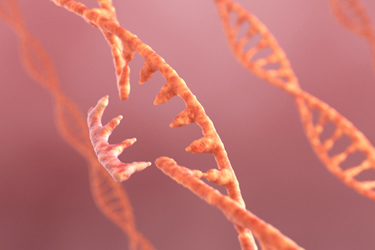RNase Control: An Overview With Market Trends
By Aashi Mishra, Research Nester

RNA-based research has gained significant importance in recent years and is seeing new avenues opening up due to the success of the COVID-19 RNA-based vaccines. Because genetic illnesses are becoming more common (such as sickle cell disease, cancer, and Huntington’s disease 2), there is greater demand for gene treatments and gene-based research, which depend heavily on RNA surveillance. In this article, we will explore various aspects associated with the burgeoning ribonuclease (RNase) control market.
Prominent RNase Types
- RNase A: It is an endoribonuclease and foundational enzyme that particularly degrades single-stranded RNA. The major application for RNase A is to eradicate RNA from preparations of plasmid RNA. In simple terms, it is used by the human body to defend against the seizure of microorganisms. This is done by secreting enzymes found in fluids, perspiration, and saliva.
- RNase H: Ribonuclease H is further divided into two types called RNase H1 and RNase H2 enzymes. These two share a common structural fold of amalgamated beta sheets encapsulated by numerous helices. RNase H plays a dominant role in biochemical processes related to DNA replication, DNA repair, gene expression, etc. These can degrade RNA or DNA hybrids that are generated during the time of replication of viruses.
Applications Of RNase Control
RNA Extraction
The process of RNA extraction is the initial step in examining the function and expression of genes. Also, it is imperative in numerous areas of research and diagnosis as it allows researchers to study genetic diseases, detect viruses, etc.
Various companies such as Qiagen, Agilent, Bio-Rad Laboratories, and F. Hoffmann-La Roche AG sell RNA extraction kits. In 2020, Beckman Coulter witnessed a tenfold increase in its RNA extraction business.
RT-PCR And qPCR
Real-time PCR is a technique used to detect and quantify RNA or gene expression levels. It helps detect pathogens such as viruses for the diagnosis of infectious diseases such as influenza A, influenza B, and COVID-19.
Research Nester estimates that the RT-PCR kits market garnered $4 billion in 2023, and by 2033, the market will reach $7 billion in revenue. The growth can be attributed to factors such as the rising prevalence of infectious diseases.
According to data published by the World Health Organization, there were 249 million cases of malaria in 2022. RT-PCR assays have the caliber to detect even very low levels of parasitemia and are widely used by physicians to test for malaria, fueling demand for the kits.
RNA Sequencing
The process of RNA sequencing allows researchers to analyze new and known features in one assay. This enables the identification of single nucleotide variants, transcript isoforms, gene fusions, and numerous other features without requiring any prior knowledge.
The global market for RNA sequencing is projected to grow from $4 billion in 2024 to $10 billion by 2030. Recently, CD Genomics released full RNA sequencing service packages including library construction, sample standardization, personalized bioinformatics analysis, genome assembly, etc.
Analysis Of Gene Expression
The purpose of gene expression analysis is to determine the pattern of genes that are expressed during genetic transcription. The process is conducted under specific circumstances or in a particular cell. These reactions are regulated extremely carefully and under different cell types.
Some of the factors responsible for the increasing demand for gene expression analysis are rising technological advancements, increasing adoption of personalized medicine, and high investment in genomic research. Gene expression analysis holds importance in various other applications such as drug development, disease biomarker discovery, and drug development.
Products For RNase Control
- RNase-free reagents and kits: As part of the routine quality control process, ribonuclease-free buffers and reagents are widely used for addressing nuclease contamination.
- RNase removal solutions: An example is Thermo Fisher Scientific’s RNaseZap RNase Decontamination Solution, which comes in a spray bottle and can inactivate and remove RNases on contaminated surfaces.
- RNase inhibitors: These enzymes are widely used as RNase activity inhibitors during experiments. The inhibitors are further used as precautionary measures in the enzymatic manipulations of RNA. RNase inhibitors are useful in preventing the degradation of the RNA.
- Decontamination spray and wipes: RNase wipes are designed to eradicate contamination on surfaces. Such wipes are used to clean work surfaces, lab apparatus, plastic and glass vessels, and pipettors.
RNase Control Market Analysis
The RNase control market is projected to garner $180 million by the end of 2024 and is projected to reach $480 million by 2037. Some of the growth-propelling factors for the market are the increasing field of genomics and the impact of the COVID-19 pandemic.
The pandemic’s positive impact on the market is due to the exponential usage of the RNase control in finding nucleic acid from SARS CV-2. There was a plethora of government initiatives that led to a decrease in the price of the RT-PCR kits, increasing the availability of the kits.
Some of the companies operating in the market are Thermo Fisher Scientific, Merck, Qiagen, New England Biolabs, Roche Diagnostics, Illumina, Bio-Rad Laboratories, Meridian Bioscience, Takara Bio, and Genomics.
RNase control companies will find the most lucrative growth opportunities in North America, due mainly to the significant growth of technology and rising mergers in the gene therapy sector. Also, the region is witnessing a high level of research and development in the gene editing sector.
 About The Author:
About The Author:
Aashi Mishra works at Research Nester and is an experienced research writer and strategist with a demonstrated history of research in a myriad of industries.
